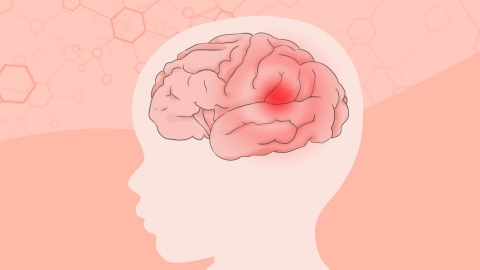How is cerebral vascular occlusion treated?
Generally, cerebral vascular occlusion may be caused by long-term smoking and alcohol consumption, aging-related vascular degeneration, hypertension, hyperlipidemia, cerebral atherosclerosis, and other factors. It is recommended to seek timely medical consultation to determine the exact cause, followed by improvement through general treatment, medication, surgical treatment, and other approaches under the guidance of a physician. A detailed analysis is as follows:

1. Long-term smoking and alcohol consumption: Prolonged exposure to nicotine and alcohol damages the vascular endothelium and injures the vessel walls, leading to thrombus formation and subsequent occlusion. Immediate cessation of smoking and alcohol consumption is necessary, along with avoiding secondhand smoke. Drinking more warm water in daily life can help promote metabolism and reduce vascular irritation.
2. Aging-related vascular degeneration: With increasing age, blood vessels lose elasticity, their lumens become narrower, and blood flow slows down, making thrombosis and occlusion more likely. Regular vascular check-ups are recommended, along with consistent moderate exercise such as walking or practicing Tai Chi. A light, low-salt diet can help delay the vascular aging process.
3. Hypertension: Poor long-term blood pressure control leads to continuous impact on the vessel walls, damaging the vascular endothelium and causing narrowing of the lumen, which increases the risk of occlusion. Patients should follow medical advice to use antihypertensive medications such as amlodipine besylate tablets, valsartan capsules, and metoprolol tartrate tablets. Regular blood pressure monitoring is essential to maintain stable blood pressure levels.
4. Hyperlipidemia: Excessively high levels of cholesterol and triglycerides in the blood can deposit on the vessel walls, forming plaques that gradually occlude the vessels. Patients should adjust their diet to reduce intake of fried foods and fatty meats. Medications such as atorvastatin calcium tablets, rosuvastatin calcium tablets, and simvastatin tablets should be taken as prescribed to regulate lipid levels and reduce the likelihood of plaque formation.
5. Cerebral atherosclerosis: Lipid deposition and fibrous tissue proliferation in the vessel walls lead to narrowing and impaired blood flow, eventually causing occlusion. Symptoms such as dizziness and limb numbness may occur. During the acute phase, antiplatelet drugs such as aspirin enteric-coated tablets, clopidogrel bisulfate tablets, and ticagrelor tablets may be used as prescribed. If the occlusion is severe, carotid endarterectomy may be required to remove thickened intima and plaques, restoring vascular patency.
In daily life, maintaining a regular sleep schedule and avoiding staying up late are important. Eating more dietary fiber-rich foods such as celery and oats can help control weight and prevent obesity. Emotional stability should be maintained to avoid excessive tension and anxiety. Comprehensive management strategies can reduce the recurrence risk of cerebral vascular occlusion and help maintain cerebral vascular health.






